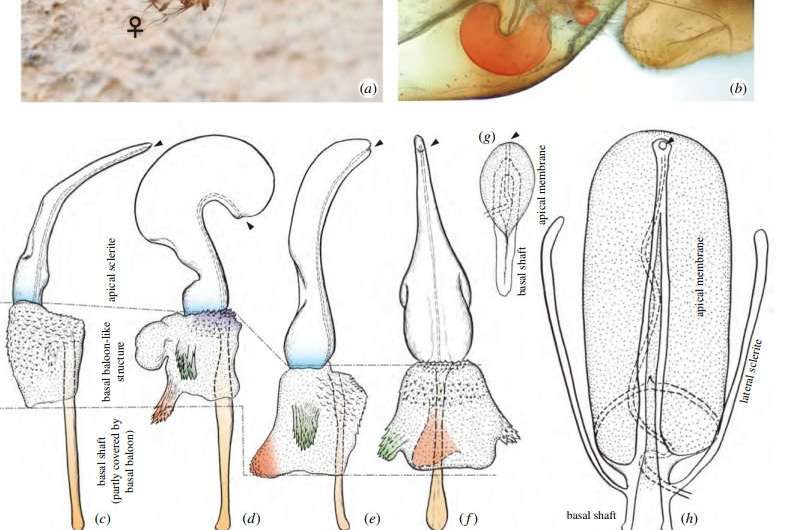November 21, 2018 report
Researchers find evidence of independent evolution of female penis in cave insects

A team of researchers from Japan, Brazil and Switzerland has found evidence that suggests female penis-like appendages in two types of cave insects evolved independently. In their paper published in the journal Biology Letters, the group describes their study of Sensitibillini insects and what they discovered.
Four years ago, a team of researchers from Japan discovered a genus of insect living in a cave in Brazil with females that had penis-like appendages and males with vagina-like pouches. The insects were given the name Neotrogla. Researchers noted that only one other insect had similarly reversed sexual organs, one named Afrotrogla. The two species fell within the same genera, so the researchers with this new effort wondered if the reversed organs developed just once, before the two species diverged, or if they evolved independently. They noted that there was another closely related genus called Sensibilia, but its sex organs were not reversed. They then studied the sex organs of all three very carefully, and came to the conclusion that the reversed organs in the two species evolved independently.
Once the researchers came to this conclusion, they focused their attention on why it happened—it seemed quite coincidental, considering that just about every other known animal species has the more familiar male penile appendage. After comparing the environments in which the two species evolved and continue to live, they suggest it likely came down to competition for food. Both live in caves where food is scarce. Because of that, males appear to be more interested in finding food than in mating. This has led the females to assume the role of pursuer and initiator. And to prevent the male from escaping before his sperm has been collected, the female has evolved a hook that latches onto the male, keeping him in place for two or three days.
The researchers note that there are many examples of males and females evolving in tandem to accommodate the transfer of sperm, but none compare to the unique anatomy of the Sensitibillini. They also suspect that predation in their environments likely played a role in the development of their sex organs as well.
More information: Kazunori Yoshizawa et al. Independent origins of female penis and its coevolution with male vagina in cave insects (Psocodea: Prionoglarididae), Biology Letters (2018). DOI: 10.1098/rsbl.2018.0533
Journal information: Biology Letters
© 2018 Science X Network

















